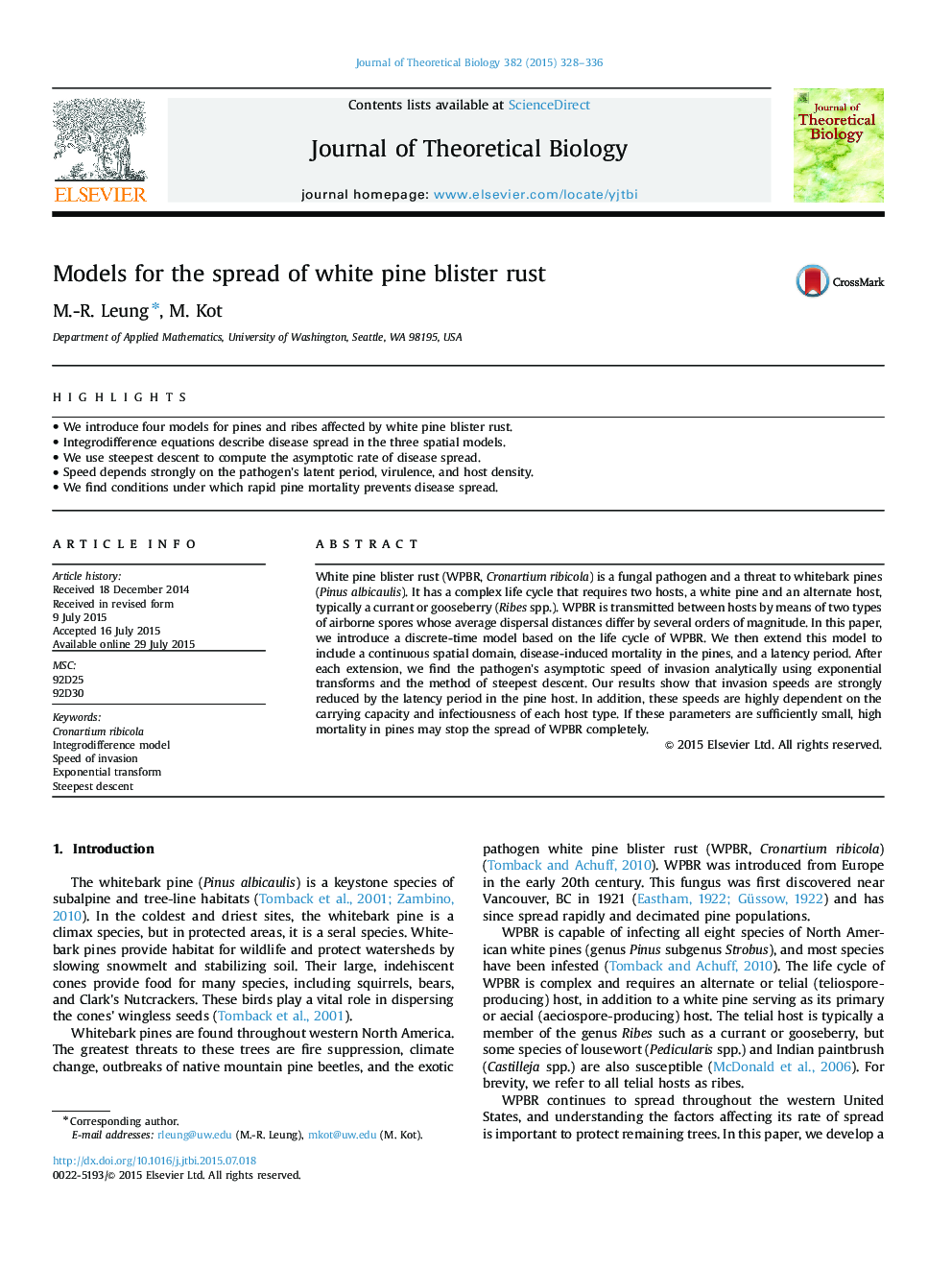| Article ID | Journal | Published Year | Pages | File Type |
|---|---|---|---|---|
| 6369568 | Journal of Theoretical Biology | 2015 | 9 Pages |
Abstract
White pine blister rust (WPBR, Cronartium ribicola) is a fungal pathogen and a threat to whitebark pines (Pinus albicaulis). It has a complex life cycle that requires two hosts, a white pine and an alternate host, typically a currant or gooseberry (Ribes spp.). WPBR is transmitted between hosts by means of two types of airborne spores whose average dispersal distances differ by several orders of magnitude. In this paper, we introduce a discrete-time model based on the life cycle of WPBR. We then extend this model to include a continuous spatial domain, disease-induced mortality in the pines, and a latency period. After each extension, we find the pathogen׳s asymptotic speed of invasion analytically using exponential transforms and the method of steepest descent. Our results show that invasion speeds are strongly reduced by the latency period in the pine host. In addition, these speeds are highly dependent on the carrying capacity and infectiousness of each host type. If these parameters are sufficiently small, high mortality in pines may stop the spread of WPBR completely.
Related Topics
Life Sciences
Agricultural and Biological Sciences
Agricultural and Biological Sciences (General)
Authors
M.-R. Leung, M. Kot,
